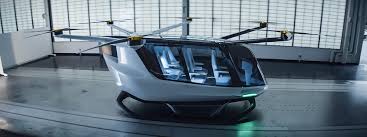
Breaking News
 LIVE ELECTION RESULTS: New York mayor, NJ & VA governor, Prop 50, Trump endorsements, latest vote
LIVE ELECTION RESULTS: New York mayor, NJ & VA governor, Prop 50, Trump endorsements, latest vote
 Sen. Markwayne Mullin Reveals Schumer Held Secret BACKROOM MEETING...
Sen. Markwayne Mullin Reveals Schumer Held Secret BACKROOM MEETING...
 RIP NYC - Muslim Communist Zohran Mamdani Wins New York City Mayoral Race
RIP NYC - Muslim Communist Zohran Mamdani Wins New York City Mayoral Race
 Dramatic Footage Shows UPS Cargo Jet Crashing At Louisville Airport
Dramatic Footage Shows UPS Cargo Jet Crashing At Louisville Airport
Top Tech News
 Japan just injected artificial blood into a human. No blood type needed. No refrigeration.
Japan just injected artificial blood into a human. No blood type needed. No refrigeration.
 The 6 Best LLM Tools To Run Models Locally
The 6 Best LLM Tools To Run Models Locally
 Testing My First Sodium-Ion Solar Battery
Testing My First Sodium-Ion Solar Battery
 A man once paralyzed from the waist down now stands on his own, not with machines or wires,...
A man once paralyzed from the waist down now stands on his own, not with machines or wires,...
 Review: Thumb-sized thermal camera turns your phone into a smart tool
Review: Thumb-sized thermal camera turns your phone into a smart tool
 Army To Bring Nuclear Microreactors To Its Bases By 2028
Army To Bring Nuclear Microreactors To Its Bases By 2028
 Nissan Says It's On Track For Solid-State Batteries That Double EV Range By 2028
Nissan Says It's On Track For Solid-State Batteries That Double EV Range By 2028
 Carbon based computers that run on iron
Carbon based computers that run on iron
 Russia flies strategic cruise missile propelled by a nuclear engine
Russia flies strategic cruise missile propelled by a nuclear engine
 100% Free AC & Heat from SOLAR! Airspool Mini Split AC from Santan Solar | Unboxing & Install
100% Free AC & Heat from SOLAR! Airspool Mini Split AC from Santan Solar | Unboxing & Install
Skai hydrogen-powered eVTOL air taxi boasts enormous 400-mile

Alaka'i Technologies' Skai machine has a range of up to four hours/400 mi (640 km) and a five-passenger capacity.
Hydrogen is a difficult fuel to deal with in an automotive context, but it might just be the shot in the arm that the electric aviation industry needs to get VTOL multicopter air taxis up and running. Current lithium battery technology offers poor energy density, which severely limits the range figures of current e-VTOL projects. But hydrogen offers up to 10 times the energy density, as well as gasoline-quick refueling, if you can deal with the inefficiencies of producing, transporting and storing it. And those difficulties can be better managed in a centralized aviation model that doesn't need to roll out across the entire road network.
Thus, Massachusetts-based Alaka'i Technologies has spent the last four years beavering away at building a hydrogen-powered air taxi, which it launched today in California. According to an interview with SoCalTech, the company is operating under the funding of a sole investor, who has carried it through design, development, prototyping and is now footing the bill for FAA certification, which Alaka'i CEO Steve Hanvey says he believes should be possible before the end of 2020 due to the simplicity of the airframe.



